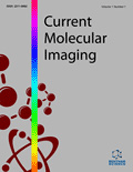Abstract
Understanding the hallmarks of cancer is valuable in advancing drug development to fight the disease. With the advent of molecular imaging, non-invasive in vivo visualization of physiology and functional pathways allow for multiple levels of disease and therapy assessment beyond tumor size measurements offered by conventional anatomic scans. Radiolabeling targeted molecules can provide insight into tumor interactions within the body and may help guide therapeutic constructs. Traditionally, radiolabeled probes have been useful for staging and diagnosis but they can also be created to monitor and identify drug targets and pharmaceutical biodistribution among other novel approaches. Radiotracers can be imaged either through single photon emission computed tomography (SPECT) or positron emission tomography (PET), with advantages and limitations to both. Adding CT to either modality is an added benefit for anatomic localization and attenuation correction. In this review, we will briefly discuss several molecular imaging agents, which target metabolism (18F-FDG, 18F-FACBC, 11C acetate), proliferation (18F-FLT, 18F-5FU, 18F-FdCyd), and cancer specific drug receptors (111In-morab009, 111In-trastuzumab, 89Zr-panutumumab). Molecular imaging is a powerful tool that one day, may be employed to personalize treatment and dosing strategies and predict anticancer therapy outcomes.
Keywords: Molecular Imaging, oncology, PET/CT, prostate cancer, radioimmunoscintigraphy, SPECT/CT, 18 F-FDG, 18 F-FACBC, 8 F-FLT, 18 F-5FU, Drug Development
 31
31

